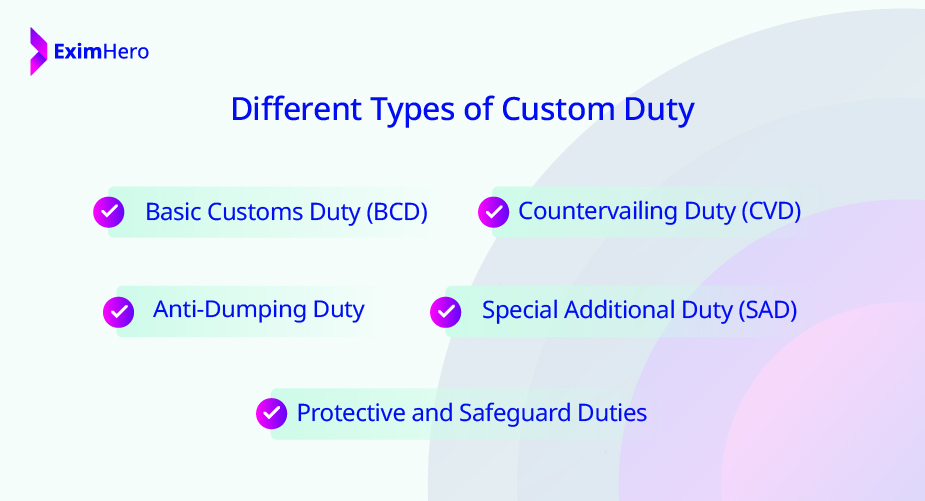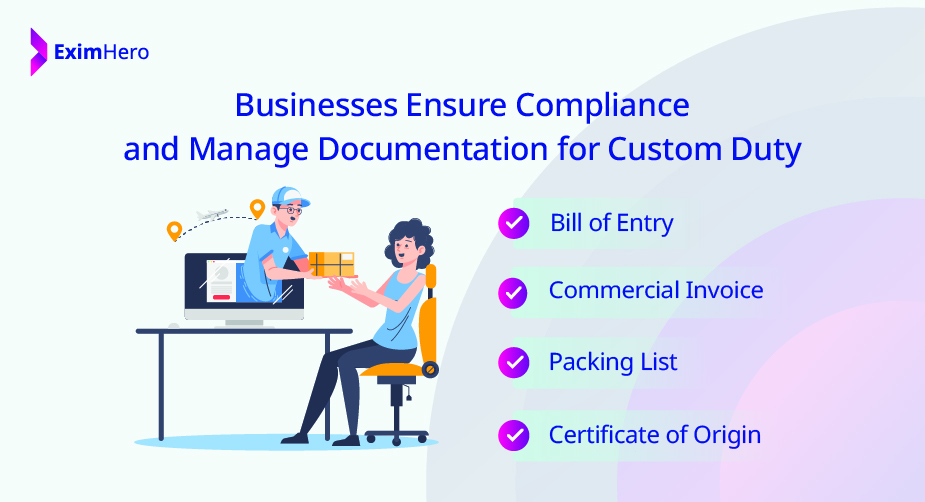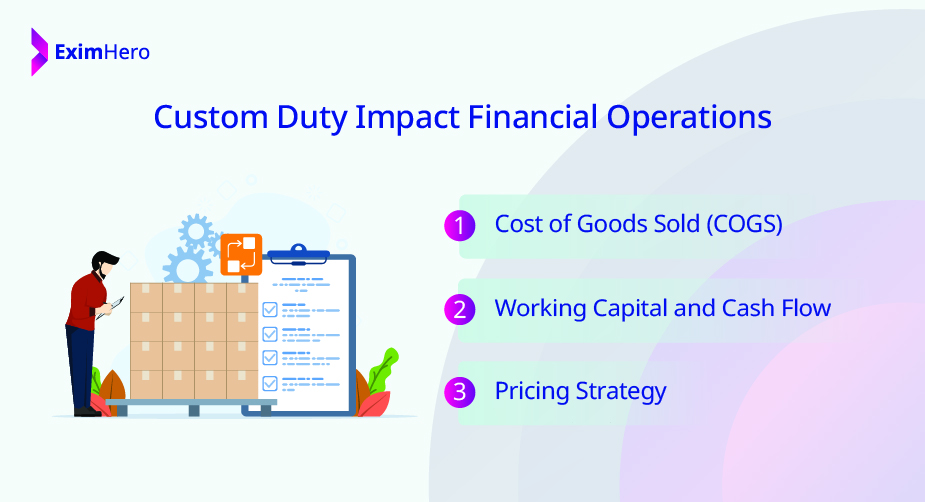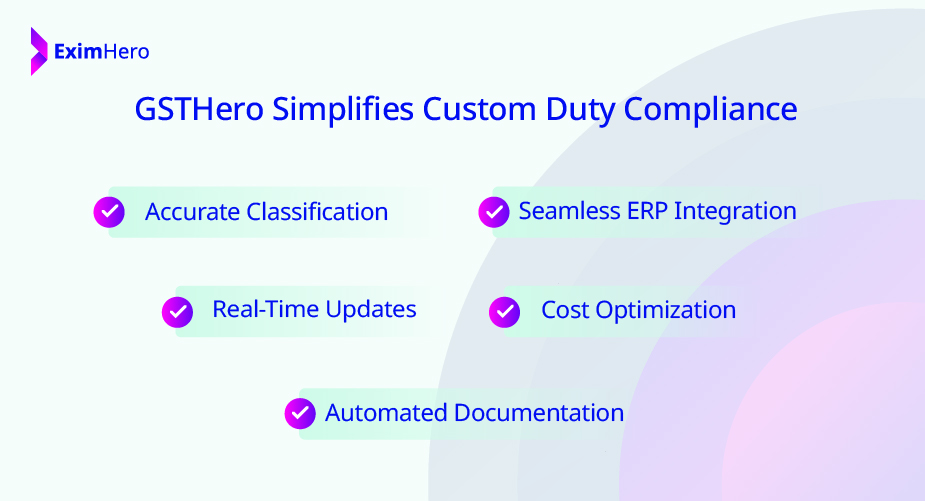Imagine receiving a shipment of goods and finding that the cost has unexpectedly increased due to an often-overlooked factor—customs duty. This sudden expense can disrupt budgets and create challenges for businesses.
Custom duty is a critical element that influences supply chains, pricing strategies, and overall profitability. Its effects extend beyond financial calculations, shaping how companies approach sourcing and market competitiveness.
It plays a significant role in global trade, affecting decisions at every level, from managing imports to ensuring compliance. Understanding custom duty is essential for navigating the complexities of today's interconnected economy.
What is Custom Duty?
Custom duty is a fee assessed on goods as they cross international borders. It acts as an "admission ticket" for goods to enter or leave a country, collected by governments to regulate trade volumes, protect domestic industries, and generate revenue.
However, custom duty is far more impactful than a simple ticket fee. It has the power to reshape financial strategies, influence consumer prices, and even dictate a company's sourcing decisions, making it a critical factor in global trade dynamics.
Necessary Implications of Custom Duty:
Cost Management: Each portion of duty affects profitability, impacting the bottom line.
Compliance: Accurate classification and declaration are essential to avoid penalties.
Strategic Planning: Custom duty considerations shape everything from sourcing to pricing decisions.
What Are the Different Types of Custom Duty?

Each type of custom duty has its own unique purpose and financial implications. Understanding these can help companies make informed choices, from which suppliers to use to how products are priced for the market.
Basic Customs Duty (BCD)
BCD is the primary duty on imported goods, calculated as a specific percentage of the item's Value. For finance teams, this is a predictable part of cost forecasting.
Countervailing Duty (CVD)
Applied to counter subsidies provided by foreign governments, CVD helps level the playing field for domestic industries. For example, if a foreign supplier's government is subsidizing its operations, this duty prevents its products from having an unfair cost advantage.
Anti-Dumping Duty
Anti-dumping duty is the "reality check" for imported goods priced questioningly low. If foreign goods are sold below fair market value, this duty is imposed to protect local businesses from being undercut.
Special Additional Duty (SAD)
Applied mainly to retail sectors, SAD reduces the price imbalance between imported and domestic goods, particularly for products entering consumer markets.
Protective and Safeguard Duties
These duties protect vital domestic industries like agriculture or technology from foreign competition. Often temporary, they're used during sudden import surges that risk destabilizing local markets.
How is Custom Duty Calculated?
Custom duty is mainly concerned with the assessed value of imported goods, including the cost, insurance, and freight (CIF). Here's a breakdown of the process:
Step 1: Calculate CIF Value
CIF Value = (Goods Cost) + (Insurance) + (Freight)
Step 2: Lay Duty Rate Established on HS Code
Each product has an HS Code, a standardized classification system used worldwide. The HS Code enables the determination of the duty rate.
Calculation Example:
If the CIF Value is $100,000 and the duty rate is 15%,Custom Duty = $100,000 * 0.15 = $15,000.
Factors influencing the duty rate include:
Country of Origin: Goods from countries with trade agreements often have lower duty rates.
Product Type: Luxury or environmentally impactful goods may have higher duties.
Seasonal Adjustments: For some items, rates may vary based on seasonal demand.
How Can Businesses Ensure Compliance and Manage Documentation for Custom Duty?

Businesses must attach to detailed customs regulations involving accurate documentation to avoid penalties. Key documents include:
Bill of Entry: A statement record filed with customs authorities.
Commercial Invoice: Lists the goods and their CIF values.
Packing List: Details about packaging, quantity, and contents.
Certificate of Origin: Ensures the basis of goods, allowing preferential remedy under trade agreements.
Using digital filing and automation can simplify this process with software solutions that reduce errors and processing time.
How Does Custom Duty Impact Financial Operations?

Cost of Goods Sold (COGS)
Custom duty directly impacts COGS, influencing everything from product pricing to gross margin calculations. Financial leaders must consider these added costs, especially for high-duty goods, to keep profit margins in check.
Working Capital and Cash Flow
Custom duty is paid during import, creating a working capital requirement that can impact cash flow. Duties can tie up significant funds for companies importing high-value goods, influencing liquidity management strategies.
Pricing Strategy
As duties inflate costs, they must be reflected in pricing—either passed on to customers or absorbed by the company. This can influence market positioning and competitiveness, especially in industries with price-sensitive customers.
What Are the Best Practices for Large Enterprises to Manage Custom Duty?

Use of Free Trade Zones (FTZs): Free Trade Zones allow companies to defer or reduce duty payments until goods are sold domestically, improving cash flow and reducing holding costs.
Engage Customs Brokers and Consultants: Experienced brokers help navigate complex regulations, reducing administrative workload and ensuring compliance.
Leverage Technology and Automation: Software solutions can automate classification, duty calculation, and documentation, minimizing manual errors and freeing up team resources.
What Is the Future Outlook for Custom Duty?
Custom duty structures may evolve with the digital economy and environmental concerns:
Digital Trade Agreements: As digital trade grows, more agreements will address the taxation of digital goods.
Carbon Tariffs: Countries are considering carbon-based tariffs to address climate change, impacting industries like steel and energy.
Trade Negotiations and Economic Policies: As countries negotiate new trade deals, custom duty structures will continue to evolve, impacting international trade.
What Are the Compliance Challenges and Penalties Related to Custom Duty?
Businesses face several common challenges in custom duty compliance:
Misclassification of Goods: Errors in HS codes can lead to incorrect duty payments.
Under- or Over-Valuation: Incorrectly declare Value may lead to fines or seizure of goods.
Non-compliance can result in fines, delayed clearance, or confiscation. Regular compliance audits and consulting with customs brokers can help mitigate risks.
How GSTHero Simplifies Custom Duty Compliance

Managing customs duty compliance can be a complex and time-consuming process for businesses involved in international trade. GSTHero offers a robust solution by automating critical tasks, ensuring accuracy, and optimizing operations. Here's how GSTHero helps simplify custom duty compliance:
Accurate Classification : GSTHero ensures precise HS code mapping, reducing errors and ensuring compliance with customs regulations.
Seamless ERP Integration : The platform integrates effortlessly with ERP systems like SAP, Oracle, and Tally, enabling smooth management of custom duty processes.
Real-Time Updates : GSTHero provides live updates on duty rates, exemptions, and trade regulations, keeping businesses informed of the latest changes.
Automated Documentation : Key documents, including Bills of Entry and Commercial Invoices, are auto-generated to ensure accuracy and eliminate manual errors.
Cost Optimization : By streamlining duty calculations and leveraging available exemptions, GSTHero helps businesses reduce compliance costs and improve profitability.
Conclusion
Custom duty is critical to global trade, impacting pricing, competition, and supply chains. Businesses can navigate international trade more effectively by understanding its types, calculations, and compliance requirements. As custom duty policies adapt to the changing global landscape, staying informed and compliant will be essential for businesses to succeed in international markets.
FAQ On Custom Duty
Custom duty is a tax that applies to goods entering or leaving a country. Governments can encourage or discourage imports and exports by adjusting custom duty rates, influencing market stability and demand.
The duty rate depends on several factors, including the product's classification under the Harmonized System (HS) Code, a global standard for categorizing goods. The item's origin and place and any applicable trade agreements also play a role, along with specific exemptions.
Custom duties include Basic Customs Duty (BCD), Countervailing Duty (CVD), Anti-Dumping Duty, and Safeguard Duty. Each fulfils a unique purpose:
BCD is widely applied.
CVD offsets foreign subsidies.
Anti-dumping duty prevents extremely low-priced imports.
Safeguard Duty offers temporary protection to domestic industries affected by increased imports.
Yes, duty rates can vary depending on trade relationships. Goods from countries with favourable trade agreements may benefit from reduced or zero-duty rates, a strategy to foster economic partnerships.
Custom duty is generally calculated based on the CIF (Cost, Insurance, and Freight) value, including the goods' cost, insurance, and freight charges. The relevant duty rate, determined by product classification and trade agreements, is then applied to this CIF value, establishing the total duty amount owed on the imported goods.
Exemptions or reductions are often available for essential goods, certain raw materials, and products from countries with trade agreements. These measures aim to support industries, make essential products affordable, or encourage technological development by reducing import costs on crucial items.
Failing to pay or underpaying customs duty can result in extreme consequences, including fines, penalties, and delays in customs clearance. In cases of significant non-compliance, goods may even be seized.
Compliance involves accurate product classification, proper documentation, and timely duty payments. Companies often work with customs brokers or consultants to manage complex customs requirements.
Sometimes, businesses can request a duty drawback or refund, especially if imported goods are re-exported. Duty drawbacks benefit companies importing goods temporarily or using components in products intended for foreign markets.
Custom duty increases the cost of imported goods, impacting product pricing and profit margins. Companies must consider duty costs when setting prices to remain competitive while maintaining profitability.
